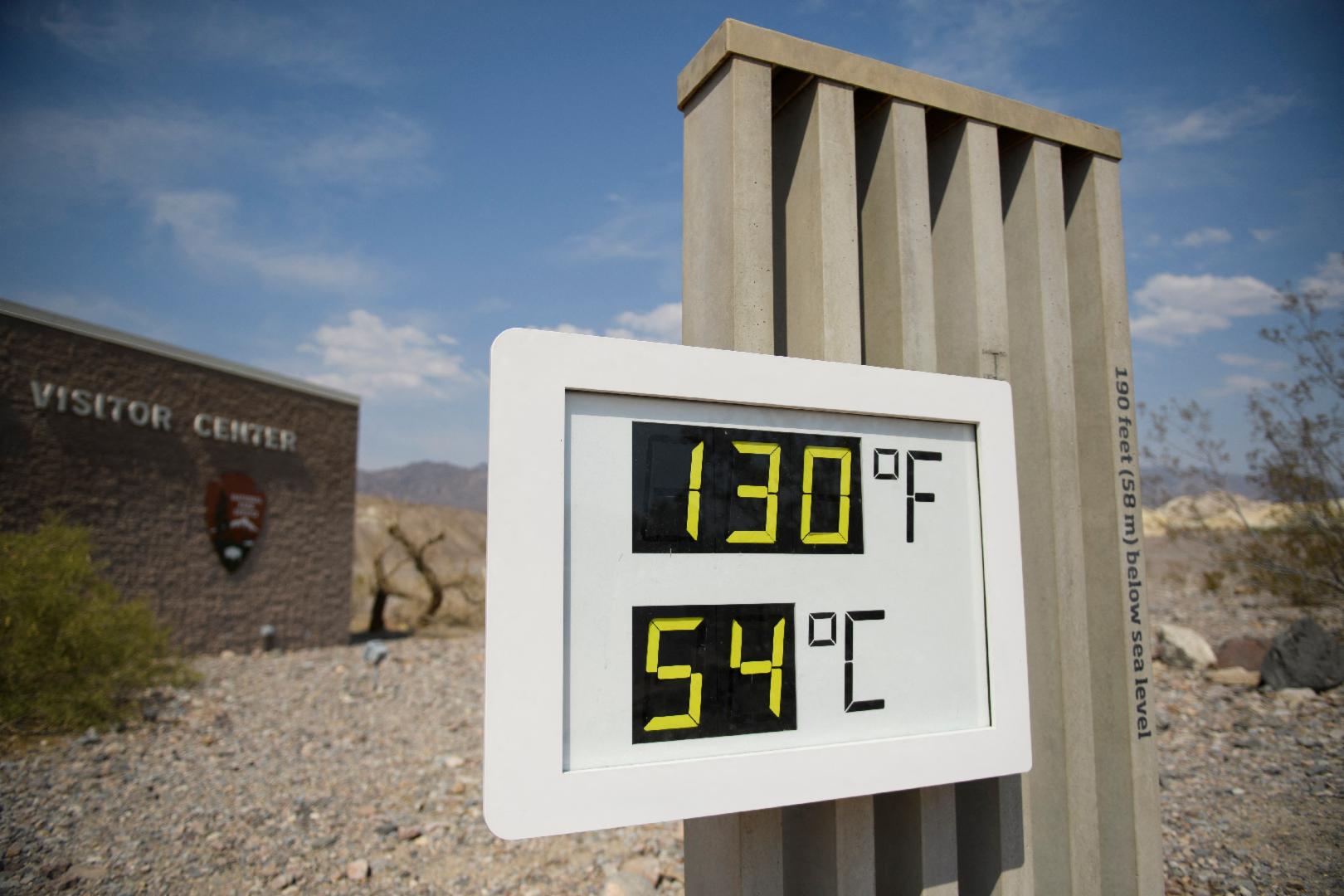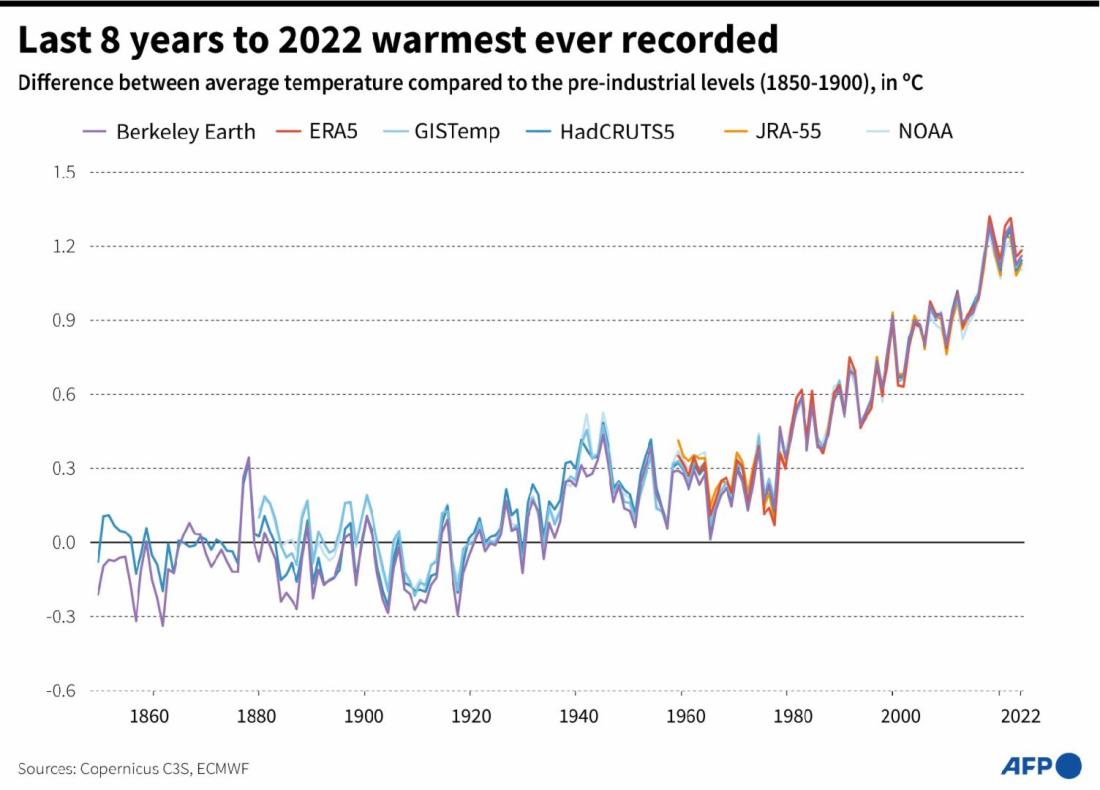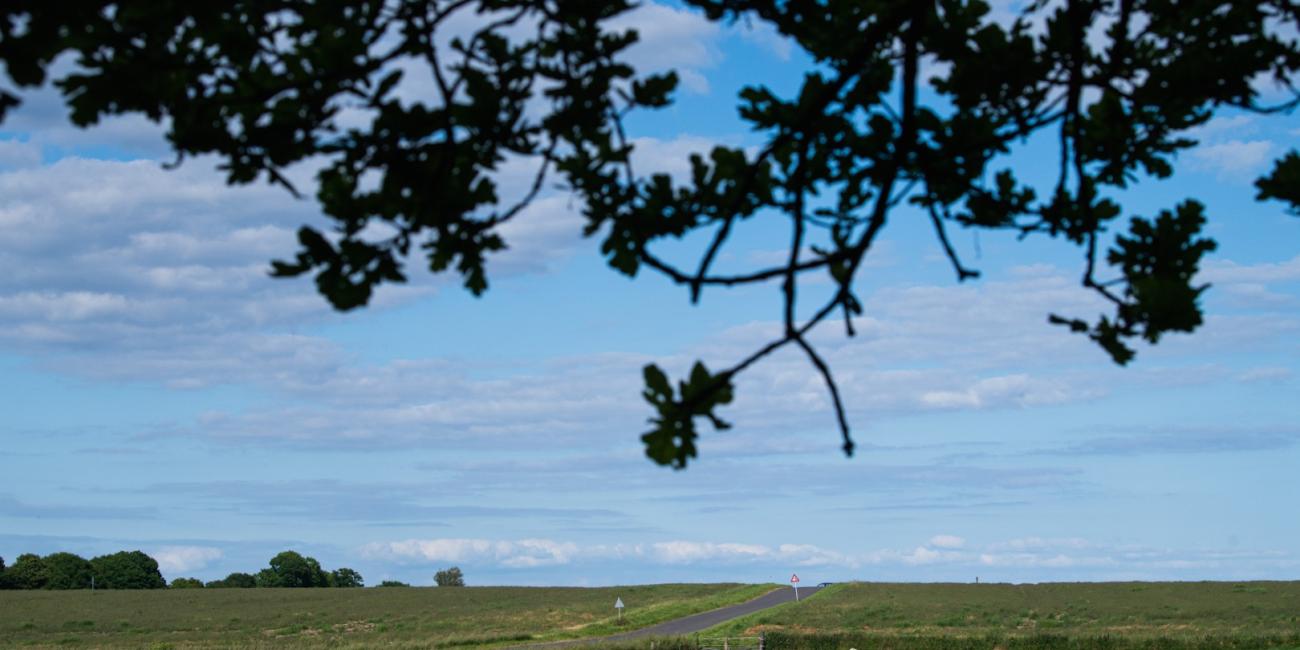
Articles mislead on US weather data, global warming
- This article is more than two years old.
- Published on August 30, 2023 at 22:54
- Updated on August 30, 2023 at 22:59
- 4 min read
- By Manon JACOB, AFP USA
"96% of U.S Climate Data Is Corrupted, Study Shows," says a July 23, 2023 headline from Slay News, a website that AFP has previously fact-checked for spreading misinformation.
The article says: "Much of the panic-inducing claims of a 'climate emergency' we hear from in the media, often supported with scary red and fire orange-colored weather maps, are mostly based on corrupted data."

Similar claims spread online -- including in German -- as summer 2023 saw high temperatures globally. NASA announced in mid-August that July was the hottest month since records began in 1880 (archived here).
The Slay News story cites a 2022 report (archived here) from the Heartland Institute, a US nonprofit that promotes "free-market solutions to social and economic problems." AFP has previously fact-checked the group's climate claims.
"This report finds approximately 96 percent of US temperature stations fail to meet what the National Oceanic and Atmospheric Administration (NOAA) considers to be 'acceptable,' uncorrupted placement," says the study, which has not been peer-reviewed or published in any reputable scientific journal. "These findings strongly undermine the legitimacy and the magnitude of the official consensus on long-term climate warming trends."
Anthony Watts, the paper's author and a senior fellow at the Heartland Institute, surveyed 128 weather monitoring stations across the country -- most of which are part of the US Historical Climatological Network (USHCN), NOAA's old weather observation network.
Of those, Watts determined only five were "best-sited" or "acceptably sited." The rest were "corrupted by localized effects of urbanization -- producing heat-bias because of their close proximity to asphalt, machinery and other heat-producing, heat-trapping or heat-accentuating objects," according to the Heartland Institute's summary of the research (archived here).
But scientists told AFP the report, which followed up on similar surveys from 2009 (archived here), includes a sample that is not reflective of modern climate stations -- and it does not account for data adjustments operated by NOAA.
"While some stations may not meet all NOAA standards, the network as a whole provides an accurate depiction of changes through time for the United States," said Russell Vose, climate analysis group director for NOAA's National Centers for Environmental Information, on August 22.
The United Nations Intergovernmental Panel on Climate Change (IPCC) said in a 2022 report (archived here) that rising temperatures resulting from climate change can be attributed with high confidence "to human activity."
'One percent'
NOAA and independent experts told AFP the Heartland Institute's sample size comprises a small portion of the country's weather monitoring network.
"NOAA uses approximately 10,300 monthly weather and climate stations in our NClimDiv dataset," the agency's National Centers for Environmental Information told AFP on August 29. "The 128 stations in (the Heartland Institute) study only represent about one percent of the total stations in our analysis."
Zeke Hausfather, a climate scientist and energy systems analyst, agreed, telling AFP on August 23 that the United States "has a huge amount of weather stations -- more than anywhere else in the world."
In 1895, the country started measuring temperature using the USHCN, which consists of about 1,200 stations. The network belongs to the US Cooperative Observer Program (COOP), the nation's largest and oldest weather data program.
"More than 8,700 volunteers take observations on farms, in urban and suburban areas, national parks, seashores and mountaintops," the National Weather Service says on its website (archived here). "The data are truly representative of where people live, work and play."
In the early 2000s, NOAA modernized its weather data collection by introducing the US Climate Reference Network (USCRN), which specifically prioritizes high-quality, long-term climate observations in "pristine locations." In creating the network, NOAA acknowledged the need for more consistency among stations.
Hausfather said the agency keeps older sites active to provide continuity and because they "are not just used for looking at long-term climate change" -- they were built to measure weather conditions that are "much more localized."
'Extremely well-aligned'
While technology has changed over time, independent analyses show NOAA's climate data collection has been historically consistent and reliable.
Hausfather reviewed NOAA's datasets and found no significant discrepancies between readings from urban and rural stations across the country over the past century (archived here).
Thanks to the modernized system implemented in the early 2000s, Hausfather said scientists "have a very, very good sense of what US temperatures are." In fact, he noted that "the USCRN actually shows slightly faster rates of warming since 2005 in the US than with the old weather station network."

There is "a real phenomenon called urban heat islands" in which temperatures rise on surfaces such as concrete, asphalt and steel, Hausfather said. But "the approach that we have to detect and correct for localized biases at weather stations is effective," he said.
NOAA identifies and removes such biases, as Hausfather has independently demonstrated in his peer-reviewed research published in the Journal of Geophysical Research: Atmospheres (archived here).
A similar study published in 2010 (archived here) concluded that the adjusted historical temperatures from NOAA were "extremely well-aligned" with the more recent measurements from modern stations.
A climate scientist within the NASA Goddard Office of Communications told AFP on August 22 that "myths about station quality/siting/urbanization biasing observations of long-term warming have been thoroughly refuted from a number of angles."
"Comparing high-quality station data from the US Climate Reference Network to nearby stations from the larger pool of US Historical Climate Network conclusively demonstrated that NOAA's monthly mean data were reliable," the spokesperson said.
More of AFP's reporting on misinformation about climate change is available here.
Copyright © AFP 2017-2025. Any commercial use of this content requires a subscription. Click here to find out more.
Is there content that you would like AFP to fact-check? Get in touch.
Contact us




